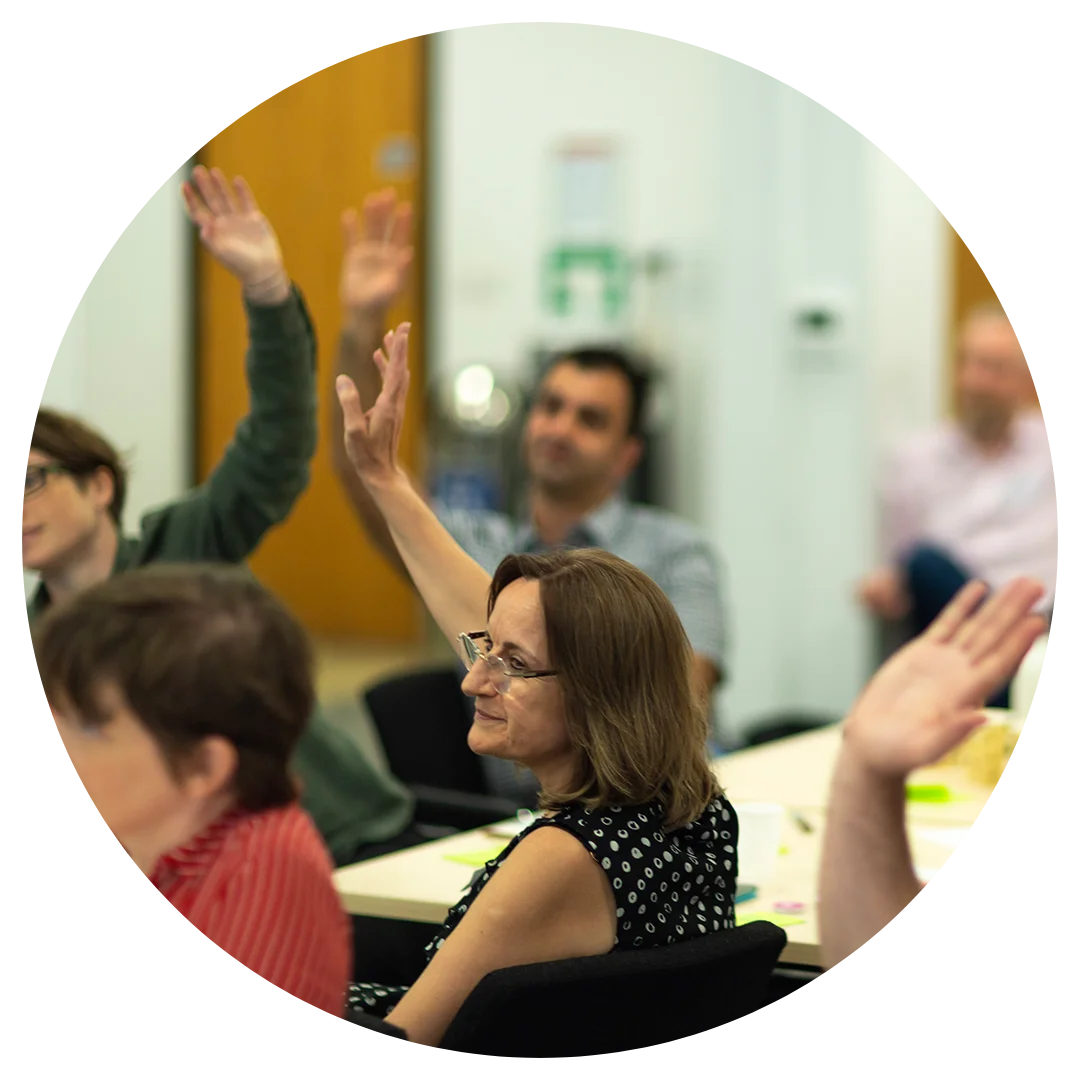12 Ways to Make Hybrid Working More Inclusive
On March 3, 50 people working in digital transformation and organisational development, principally from local government, joined LOTI for a webinar on Hybrid Technologies for Inclusive Workplaces. How we work has changed immensely in the past two years, and is increasingly defined by technology solutions and asymmetric work patterns. In this context, the key question for the webinar was: how can we ensure our future of work is more inclusive and accessible?
We were delighted to have speakers from the technology companies developing the technologies that are shaping hybrid work, and organisation leaders who are shaping their own organisations’ transformations:
- Sean Rintel, Principal Researcher at Microsoft
- Adanna Igbokwe, Solutions Engineer at Zoom
- Florian Opitz, Customer Engineer at Google Cloud
- Suzanne Semedo, Head of Diversity, Wellbeing and Culture at Ofcom
- Luke Marshall-Waterfield, Deputy CDO at the GLA
Below are some of the key recommendations that they had for how organisations can build a more inclusive future of work in hybrid organisations.
- Design solutions for collaboration reasoning. It’s not enough to simply build the collaboration tools and let collaboration take care of itself. Help teams be more intentional about their collaboration expectations, help make the seams between different types of work more intelligible and visible, and help teams experiment to find what works for them.
- Build trust through dialogue with the accessibility community. When you are designing new solutions or products, Adanna described how Zoom constantly listen to feedback, collaborate and engage with potentially affected users who may use something in a unique way, to ensure their solutions are designed in an inclusive and accessible way. This was demonstrated by all speakers, either in product design or consulting with staff for organisational policy and development.
- Create and adhere to standards for accessibility and inclusivity. For example, Google (like Microsoft and Zoom too) adhere to universal W3C standards, and also create their own Voluntary Product Accessibility Templates for each product, which show how it can be used in accessible ways. How might this work in local government workplaces?
- Establish a multi-disciplinary team to work collectively to embed transformation. Ofcom brought together tech, HR and communications colleagues to ensure that technologies can be implemented successfully and with the right intentions. You can read the LOTI guide to Hybrid Work programmes here for more information.
- Nothing can replace the role of an inclusive leader. As much as specific products or ideas can help with inclusion, nothing is more powerful than when an organisations’ leaders are strong on the subject.
- Offer local-level, rather than one-size fits all solutions. Give team leaders permission to set up their teams in ways that work for them, rather than impose a solution on everyone. The GLA provided a toolkit for their managers to help them manage hybrid teams.
- Question the assumptions underpinning your workplace culture. If you want to recreate the watercooler conversations, is that good for everyone? That culture excluded people, if they were not able to contribute as well as others. How can we challenge these assumptions to build more inclusive workplaces?
- Start with the users (or staff). The GLA ran user-research to understand the full cross-section of employee experiences, and a key element of this was engaging with the full range of staff networks, such as disability networks. The most important thing, as per Sean Rintel’s research at Microsoft, was to allow people to have a say about their working conditions.
- Get regular feedback on staff. At Google, Florian explained that they regularly collect information on their users. As well as helping with long-term trends, if a single person has a temporary or short-term change in circumstances, like an injury, this can help react to this and make suitable accommodations for them.
- Empower staff to make the best decisions for their work. For example, for Ofcom, this might mean particularly articulating the benefits of face-to-face communication for inclusion and wellbeing, as their research has shown. It also means supporting managers to help staff make these informed decisions.
- Consider the broad inclusion dynamics of an asymmetric workforce. For example, if those working remotely have worse experiences than those working in an office, this will have broad, organisation-level implications. This is because it may disproportionately affect particular staff, for example those with disabilities that make office-work more difficult, thus compounding their exclusion from the organisation.
- Organisations that embrace hybrid work will thrive. If organisations can embrace the opportunities and changes that are needed, they may see business models change and ways of working adapt, but they will thrive in the future, attracting the best staff.
Tech tips for more accessible work
As well as useful approaches and methods to make work more inclusive, our speakers also offered some specific tips for how our workplace technologies can improve accessibility:
- Use in-meeting accessibility options, such as manual captioning or automatic transcription, screen reader support, and automatic transcription generation.
- Use multi-spotlight or multi-pin features to ensure that interpreter and speaker videos are visible for all.
- Build accessibility into digital platforms, rather than individual products. Just as Chrome allows for accessible features across all Google apps, governments might want to develop accessibility foundations that travel for a given user from one service to another.
- Use companion mode, available on Teams, Google Meet, or Zoom, to use a secondary device to help with specific needs, like magnifying needs.
- Set up a room the right-way for a hybrid call. Microsoft have a dedicated guide, as do Zoom and Google, which organisations can refer to.
- Google are allowing people to indicate how they are joining a hybrid meeting, either saying they will join in the room or remotely.
What features are on the horizon?
- Zoom are trialling multi-language capabilities, such as live simultaneous AI-based translation, for a more frictionless cross-language collaboration.
- Zoom (as well as Google and Microsoft and other video call providers), are using AI-enabled noise suppression to suppress background noise, and allow those joining remotely from busy areas to participate better in meetings.
- Microsoft has demonstrated a new meeting concept called ‘Perspective Mode’, which segments every person in a video and puts them all around a virtual table with a consistent layout.
- Google is going to extend virtual meetings in a way that it feels like being together in one room (Project Starline).
Sam Nutt



